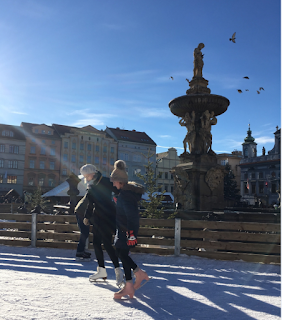The first Christmas sermon was
delivered at Hohi (Oihi), Bay of Islands in 1814 by Samuel Marsden, a Church of
England priest, and a member of the Church Missionary Society. Marsden believed
that because Māori were experienced in trade they were perfect candidates for
conversion to Christianity. Marsden explained that as Māori understood trade, this was
a ‘key aspect in terms of accepting European ideals and beliefs’.
The natives of
New Zealand are far advanced in civilisation and apparently prepared for
receiving the knowledge of Christianity more than any savage nations I have
seen. Their habits of industry are very strong; and their thirst for knowledge
great, they only want the means. The more I see of these people, the more
pleased I am with…they appear like a superior race of men”
Claudia Orange, The story of a treaty, p. 14
 |
Samuel Marsden preaching at Oihi
Bay, Christmas 1814, Auckland Libraries Heritage Collections 7-A1818.
|
My Māori Christmas
The fondest memory I have around Christmas time is hearing dad saying, "the Pohutukawa is blooming, time to get some kina (sea urchins)". The Pohutukawa tree is also known as the 'Settlers Christmas Tree'. It's bright red blooms are not only visually stunning but have been mentioned as being used by Ngāpuhi leader, Eruera Patuone as part of the table decorations at a feast he hosted. Another staple of Christmas was the preparation of and enjoying a hāngi. Sir Peter Buck describes a hāngi as an earth oven with heated stones and a covering of earth. I remember that the meat cooked in the hāngi was tender, the vegetables tasty and the pudding delicious. Christmas was a time where I enjoyed helping in the preparation of food, watching my father make the hāngi, shell the kina and spending time with my whānau. Okay it was slightly about the presents as well but that's another story.
 |
Image:
Melanie Lovell-Smith, Te Ara Encyclopedia of New Zealand
|
This post was written by Ani Sharland with thanks to New Zealand History Online, Te Ara: the encyclopedia of New Zealand, The Coming of the Māori by Sir Peter Buck and The Alexander Turnbull Library.












































